Monday, December 23rd, 2019.
In this Daily: Picking the Right Components to Fine Tune Your Bike
Picking the right components is a fundamental part of fine tuning a bike to any form of riding. When the comfort, speed, acceleration, deceleration, weight, performance, durability, strength, control, and responsiveness of a bike all depend on picking the right parts, it’s important to know what to look for and the key decisions to consider.
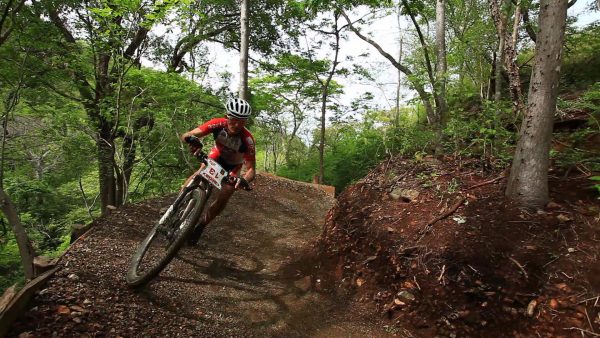 On the trails at Las Catalinas, a tuned bike can elevate the level of competition, and make day to day rides and training much more enjoyable
On the trails at Las Catalinas, a tuned bike can elevate the level of competition, and make day to day rides and training much more enjoyable
In the walkable beach town of Las Catalinas, the 42+ km of single track mountain biking trails host competitions like the Reto and the Las Catalinas TRI, where every moment matters while racing for the best time. On more casual rides, the extra comfort and familiarity can elevate the experience as riders swoop along coastal cliffs and down into tropical dry forests.
Here is a guide laying out some of the key considerations of the six major areas of the bike: the body, the saddle, the handlebars, the pedals, the drive train, and the wheels.
The Body
A bike’s body is the most fundamental area of the bike, as it dictates the type of riding that a bicycle is suited for. Between Frame, Fork, and Shocks, a bike can be calibrated for everything from high-performance road riding to downhill stump jumping and freeriding.
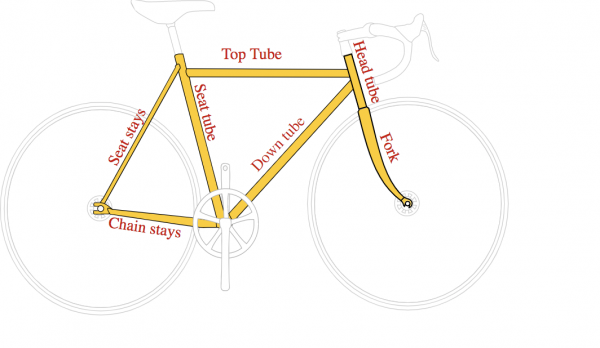 The body of a road bike. The frame geometry and body of a bike determine which sports the bike will be suited to | PC: Commons
The body of a road bike. The frame geometry and body of a bike determine which sports the bike will be suited to | PC: Commons
The frame comes into play first. As the structure upon which the entire bike is constructed, the frame must be appropriately sized to the rider, with its geometry selected per sport. A road bike will have a thin, lightweight frame, that of a standard mountain bike will be thicker and more durable, and heavy-duty downhill bikes almost all have bodies with a full suspension. However, regardless of sport, the ideal frame will be stiff, lightweight (in its class), and strong.
Next after the frame are the fork and shocks. The key measurement to consider for these two components, is travel, which is the measure of how much capability a shock absorber has to absorb an impact. More travel corresponds to a softer ride, at the cost of some responsiveness, which is why some modern bikes, especially mountain bikes, have adjustable travel for uphill and downhill portions.
One other consideration for forks and shocks is the decision between air suspension and spring suspension. Modern bikes have gone the way of air suspension, but in higher altitudes some riders prefer springs for a more consistent and familiar ride.
The Saddle
Next after selecting a bike’s body is the saddle, one of the three major points of contact between rider and bike, along with the handlebars and pedals. One of the key rules in choosing the components of a bike is to invest in the comfort of the three points of contact, as they can make a major difference during many hours spent on a bike.
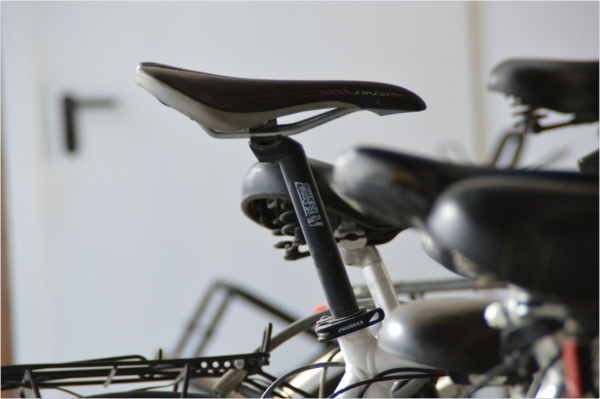 The bike saddle and seatpost comprise the first point of contact for the bike, and it's important to plan for comfort | PC: Commons
The bike saddle and seatpost comprise the first point of contact for the bike, and it's important to plan for comfort | PC: Commons
It follows that the saddle itself should be carefully selected. Saddles come in a wide variety of shapes and sizes to suit every size of person, and before selecting a saddle riders should be very comfortable with the shape, width, and comfort of the bike underneath them.
Just under the saddle is the seatpost, which offers variants both dropper post and no dropper post. A dropper post is a mechanism, usually hydraulic, by which riders can “drop” their seat to its lowest configuration at the flick of a button. This feature is usually used in mountain biking, where there is a need for the mechanical advantage of a higher seat when climbing as well as the increased control of a lower seat for downhills.
The Handlebars
The second point of contact for a bike is the handlebars, which comprises four components: the stem and handle bars, grips, and brakes and shifters.
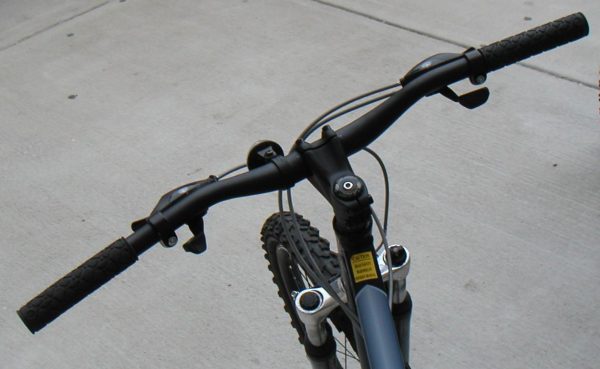 As the second point of contact on the bike, the handlebars determine the rider's position on a bike
As the second point of contact on the bike, the handlebars determine the rider's position on a bike
There are two main contributions made by the stem and handlebars. The first is personal fit. Stem and handlebars can be more forward, pulled back, moved up, and moved down, and come in variations like flat, v-shaped, curved, front l-shape, and others. All of these elements determine the rider’s positioning on the bike, which is important to get right due to both comfort and mechanical performance based on the preferred form of riding.
The second consideration for stem and handlebars is the material, which in modern bikes is a choice between aluminum and carbon fiber. Carbon fiber is lighter and stiffer, which reduces vibration, but aluminum tends to have more durability in the long run due to its increased ability to take damage without losing structural integrity.
The actual point of contacts on the handlebars are the grips, and the attached brakes and shifter controllers. Grips can come in many shapes and sizes, with some ergonomically built for a wider hand, some thinner and lighter in materials like foam, and in locked-on or not lock-on variations (which can help with long term maintenance). Still, the main consideration here is comfort and familiarity, which extends to the brake and shifter controllers, as these points of contact are the main interface riders have to control the bike.
The Pedals
The third and final point of contact from rider to bike are the pedals, which comprise two components: the pedals themselves, and the crank set. This is the powerhouse of the bike, the area ultimately responsible for making the bicycle move, and the key elements to consider are the connection between rider and pedals, as well as the quality of the crank set.
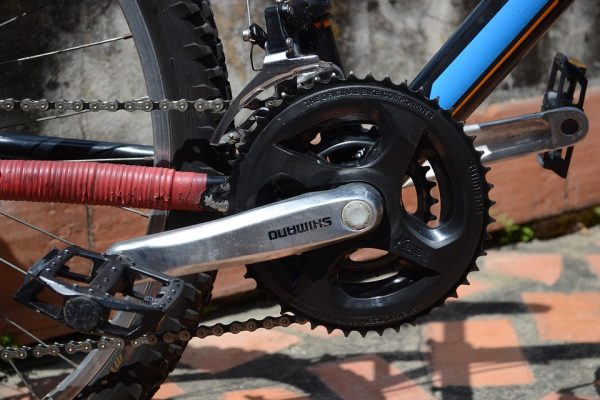 The pedals and crankset are crucial for transferring rider power into forward movement | PC: Commons
The pedals and crankset are crucial for transferring rider power into forward movement | PC: Commons
The pedals themselves are the physical point of contact between a rider’s legs and the bicycle, and getting this connection right can drastically improve the efficiency of movement on a bike, as well as the comfort of the rider. Pedals come in a variety of forms for comfort and fit, but for a serious rider the ability to “clip in” is a must. With clips, riders get more power and more control over the movement of the pedals, are able to both push and pull (or ‘spin’), which is far more energy-efficient, and there’s no concern of feet slipping off of the pedals.
Next is the crank set, which is the physical connection between the pedals and the drive train. For a crank set, stiffer and lighter are objectively more desirable, and finding a quality crank set can make the movement of the bike as a whole more responsive and efficient.
The Drive Train
The drive train of a bicycle is the link between pedals and wheels, and as a result is fundamental to the transfer of power from the rider into actual movement of the bicycle. There are four major components of the drive train -- the shifters, derailers, chain, and cassette -- which all must work in harmony. With these components, the goal is smoother, faster, and crisper gear shifting, all in lighter weight.
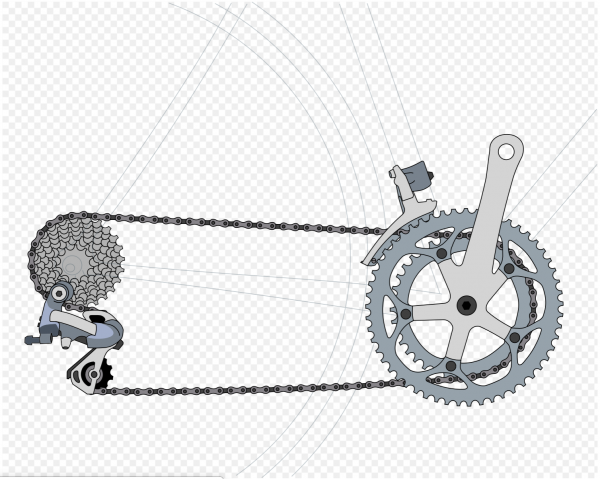 Shifters, derailers, chain, and cassette comprise the drive train of a bicycle, and all must work in tandem
Shifters, derailers, chain, and cassette comprise the drive train of a bicycle, and all must work in tandem
Shifters in reference to the drive train are the actual mechanical pieces that control the bike’s derailer. Connected to the shifter controller on the handlebars via either wired or wireless connection, this hub executes the rider’s gear adjustments as smoothly and effectively as possible.
The shifters directly control the derailers, which control the movement of the chain onto both front and back cassettes (with mountain bikes moving towards single-gear front cassettes and higher-gear back cassettes). Like the shifters, a quality derailer will ensure that the bike responds immediately to any intended change of gears from the rider, even when climbing or on complex terrain.
The chain and the cassette are the more static components of the drive train, controlled by the shifters and derailers, and the important factors to look for in these components are light weight and durability. Better-made chains and cassettes will resist rust, wear and tear, and ultimately remain at peak performance for longer.
A Note on Gears: Shifter controllers, shifters, derailers, and cassettes must all be outfitted for the same number of gears in both front and back, which is a notable choice to make when picking out a bike. In modern bikes, improved engineering has allowed for more gears, which provides a greater range, with higher high gears and lower low gears, as well as smoother jumps between gears that help with shifting.
Depending on the style of riding, bikes may have multiple gears in front, although recent times has seen a trend towards one or maybe two gears in the front, with up to ten or twelve in the back.
Wheels and Brakes
The final piece of the bicycle is the wheels, which serve as the link between bicycle and the ground. Comprised of three main components -- wheels, tires, and brakes -- the wheels are another component that change significantly based on the type of riding being done.
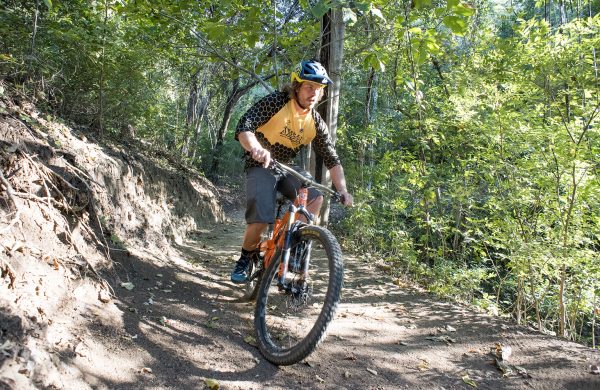 As the only point of contact with the ground, the wheels, tires, and brakes are ultimately in charge of moving and stopping the bicycle.
As the only point of contact with the ground, the wheels, tires, and brakes are ultimately in charge of moving and stopping the bicycle.
First are the wheels, which are relatively limited to the size of the bike frame and the rider. Lighter and better performance wheels are always preferable, which better-engineered bikes providing a smoother back-hub to ensure responsiveness to the drive train, as well as slight gains in rolling efficiency.
Next are the tires, which are moving away from tubed tires towards new tubeless technology. Width and traction are the two key considerations for the tires on a bike, with trade-offs made between speed and control depending on the preferred sport. Fatter tires mean more control and more traction, but can also be slower and heavier. Meanwhile, thinner tires have the potential to move faster and are lighter, but have less balance and control.
Finally are the brakes, the stopping power of the bike and one of the bicycle’s most important safety features. Modern times have seen a shift away from pad brakes towards hydraulic disc brakes, which come in a wide variety. The key trade-off made with brakes is weight vs stopping power. A downhill mountain bike, which requires the most stopping power, will lean towards more points of contact and more pistons, for a heavier duty set of brakes. Meanwhile, an endurance bike on more moderate terrain will lean towards a light and efficient set of brakes.
Finding All of the Right Components at Pura Vida Ride
The modularity of modern bicycles means that it’s possible to continuously fine tune each component to different tastes, personal preferences, and types of riding. With so many possibilities to choose from, the team at Pura Vida Ride in Las Catalinas can provide helpful insight into which components will be the best fit for each rider.
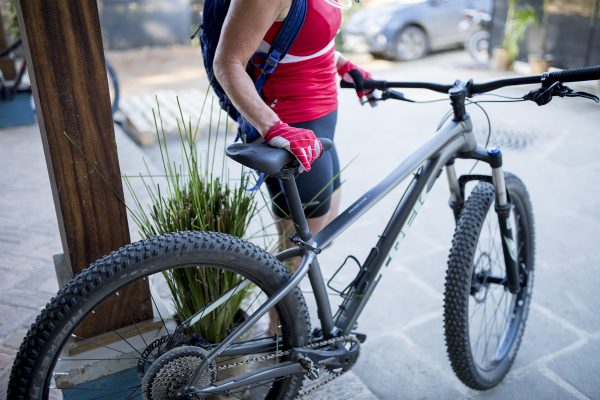 Setting out onto the trails with a fully tuned bike adds an extra level of enjoyment to mountain biking in Las Catalinas
Setting out onto the trails with a fully tuned bike adds an extra level of enjoyment to mountain biking in Las Catalinas
To learn more visit Pura Vida Ride while in Las Catalinas, and get expert guidance about the many ways to tune the components of a bike.
[maxbutton id="1" url="https://cta-redirect.hubspot.com/cta/redirect/4917861/bb90976c-fd33-457a-a285-892e384bad66" text="Visit Town and Pura Vida Ride" ]